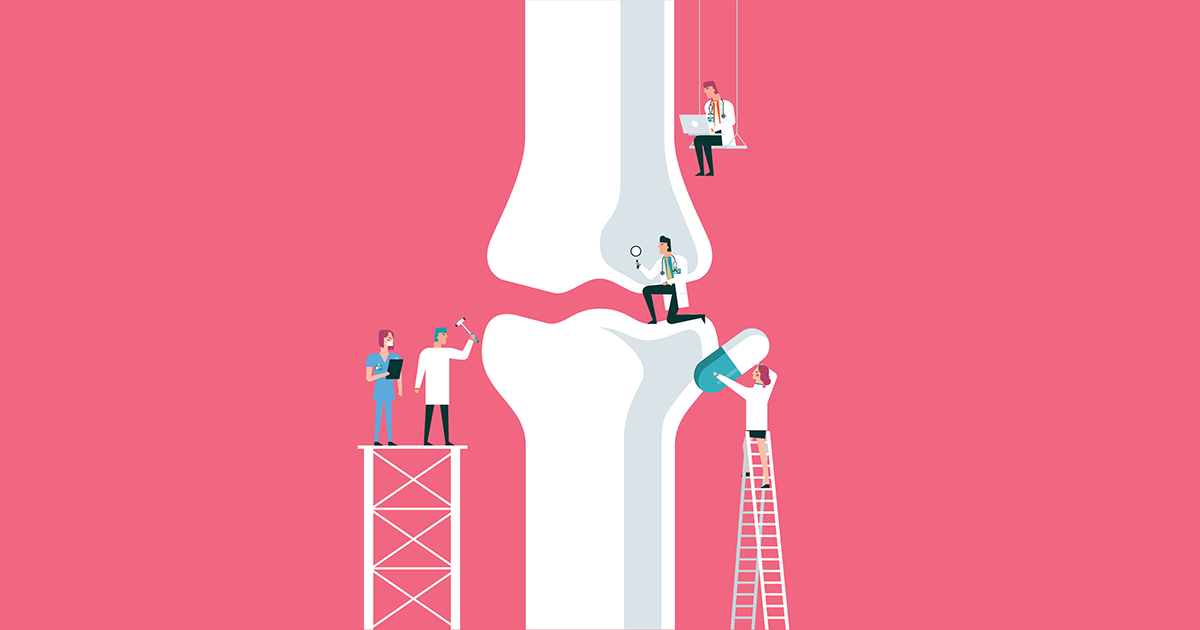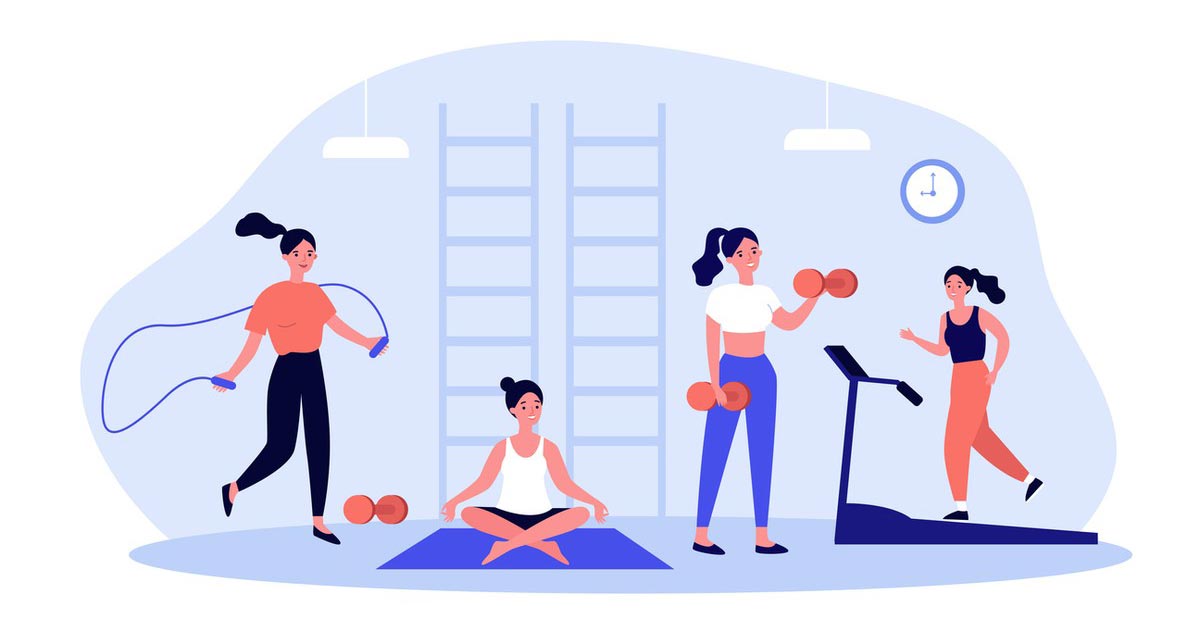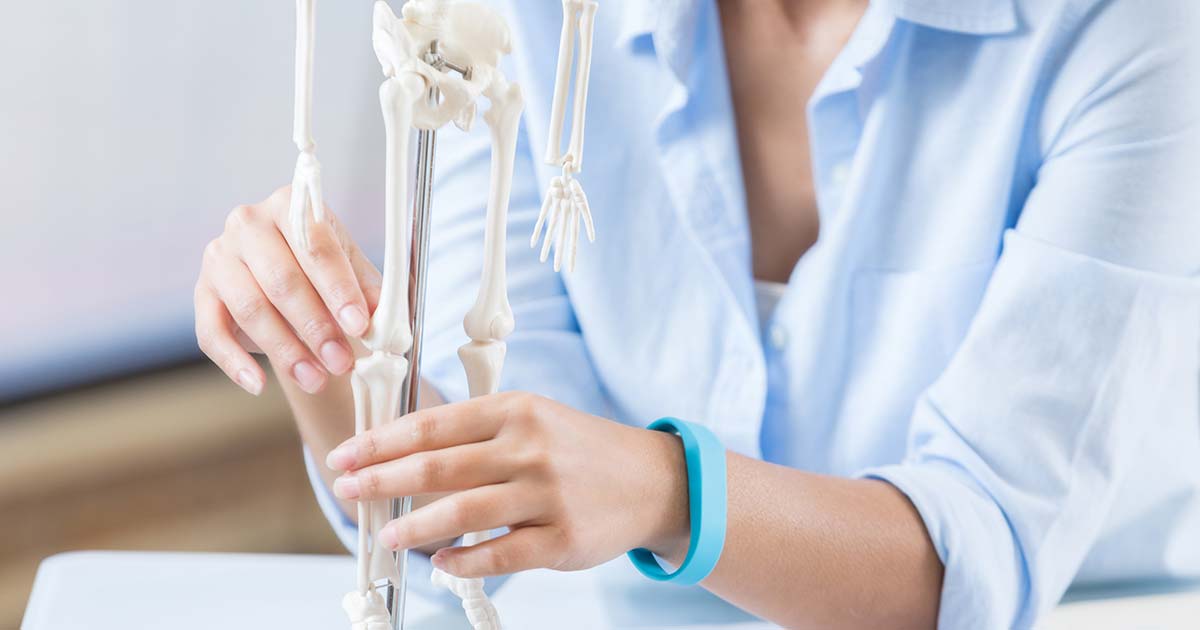You've Heard of Osteoporosis. What About Osteopenia?
Advice to improve your movement, fitness, and overall health from the world's #1 in orthopedics.
Odds are you’ve heard of osteoporosis. This disorder of the bones breaks down bone tissue, causing them to become fragile and more likely to break. It’s a widespread problem that many adults don’t discover until they already have it. But what you may not have heard of is a related condition called osteopenia. So what is it, and how is it related?

Osteopenia is a similar problem, just a lesser version of it. People with osteopenia have low bone density, which means their bones aren’t as strong as they should be, but the bone loss is not as severe as it is in osteoporosis. However, osteopenia can lead to osteoporosis, which is why it’s so important to identify if a person has the disorder before it gets worse.
HSS endocrinologist Jessica Rachel Starr, MD, is a specialist in bone health and metabolic bone disease. Here, she shares five things to know about low bone density to keep your bones strong.
1. The basis for osteopenia forms early in life.
One of the major causes of low bone density is when a person does not reach peak bone mass, or the amount of bone they should have by a certain age. In men, this typically happens in their 20s; for women, in their 30s. Many factors influence how much bone a person builds over time, including their diet; the type of exercise they do (or don’t do); some stomach-related issues that affect the body’s ability to absorb calcium, like celiac disease; and heredity, as some people are genetically inclined to build less bone than others.
“Often patients feel guilty or blame themselves for low bone density, but it is not an individual’s fault if they fail to achieve a robust peak bone mass,” says Dr. Starr.
2. Aging accelerates bone loss.
This one isn’t as surprising, but it is the truth: As we get older, our bones become more frail. It’s perfectly possible that someone develops the proper peak bone mass but loses that mass over time as they age—which sets them up for developing osteopenia and, later, osteoporosis.
“Often, people don’t know they have an issue with bone loss until they fall and break a bone,” says Dr. Starr. “Osteopenia and osteoporosis don’t cause pain or mobility issues on their own.”
One possible indicator that something may be awry is height; if you find yourself shrinking in your later years, it may be due to bone loss. “People lose an average of an inch in height as they age, but if it’s more than that, it could signal a problem,” she adds.
3. Your habits can affect your risk.
If you’re a smoker or a heavy drinker, it’s likely that you’re damaging your bones. According to the National Institutes of Health, studies have shown a direct link between tobacco use and decreased bone density.
On the bright side, good habits can also influence the health of your bones. Eating dark, leafy greens, fish and dairy products and taking a vitamin D supplement can help you keep your bone density at its peak for as long as possible.
4. Bone density testing can be a crucial tool in diagnosis.
During bone density testing, low-energy X-rays are used to see the calcium content of a person’s bones. This is compared to both healthy young adults and people of the same age and sex as the person having the test. Usually, the tests are done on the lower (lumbar) spine, hips and wrist, as these are the likeliest areas for bones to break.
Bone density testing is used to diagnose osteoporosis, but it can also diagnose osteopenia. “Bone density testing at HSS can also tell us about bone quality and help assess how advanced a person’s osteopenia really is,” says Dr. Starr.
Treatment for low bone density depends on the person, how much bone loss they have and if they’re at a higher risk for fracture. If that’s the case, there are medicines that can help reduce bone breakdown and build up the skeleton as much as possible, says Dr. Starr.
5. You may be able to prevent osteopenia from turning into osteoporosis.
Just because you have osteopenia doesn’t mean your bones are doomed to lose more mass, says Dr. Starr. There are several simple, straightforward steps you can take to shore up what you’ve got.
The first and most important of these is weight-bearing exercise. Examples run the gamut—anything from running, hiking and dancing to sports like tennis. Lifting light weights is also a great option. The point is to expose your bones to more stress than they would be under during daily activities like walking, driving or going about your usual routine.
For women, hormone therapy within the 10 years after a final menstrual period has also been clinically proven to prevent osteoporosis and reduce the risk of bone fractures. “In fact, the use of hormone therapy just for the purposes of preventing osteoporosis is approved by the FDA,” says Dr. Starr. Of course, talk to your doctor before beginning any type of hormone therapy routine.
Smoking and Bone Health | NIH Osteoporosis and Related Bone Diseases National Resource Center



